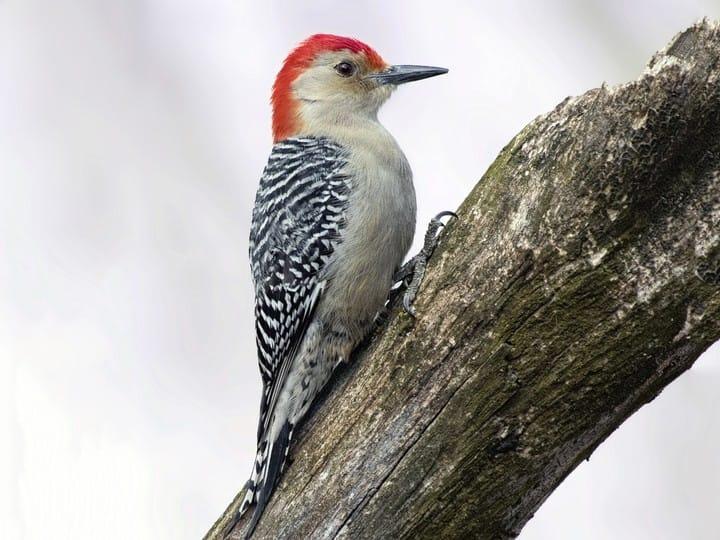Experiencing Woodpeckers in Florida: Types Diversity and Recognition
Experiencing Woodpeckers in Florida: Types Diversity and Recognition
Blog Article
Woodpeckers Unleashed: Discovering the Wonders of These Proficient Tree Mountain Climbers
Woodpeckers, with their distinctive markings and balanced drumming resembling with wooded areas, hold a special location in the bird globe. Their specialized composition and adjustments enable them to navigate vertical surface areas with unequaled ability. Their mastery of tree climbing is simply one element of their remarkable behavior. As we explore the detailed details of woodpeckers' nesting routines, feeding techniques, and the continuous conservation initiatives to safeguard these impressive birds, a deeper admiration for their place in nature unravels.
Makeup and Adaptations
When analyzing the makeup and adaptations of woodpeckers, one can observe exceptional attributes that enable these birds to prosper in their specialized eco-friendly niche. Woodpeckers are geared up with a collection of one-of-a-kind anatomical qualities that help them in their woodpecking habits. Among the most famous attributes is their strong, chisel-like beak, which is specialized for boring into timber to reveal insects or develop nesting cavities. This beak is supported by solid neck muscular tissues and a very developed skull structure that serves as a shock absorber, enabling woodpeckers to consistently peck at trees without causing brain injury. Furthermore, woodpeckers have zygodactyl feet, with two toes dealing with forward and two encountering backwards, supplying a company grip on tree trunks while they look for food or drum for communication.
Furthermore, woodpeckers have a distinct tongue framework that is long, barbed, and sticky, allowing them to draw out pests from holes in wood. This specialized adjustment enables woodpeckers to exploit a food resource that is hard to reach to numerous other bird varieties. Generally, the anatomy and adjustments of woodpeckers showcase the remarkable transformative options that have permitted these birds to flourish in their arboreal environment.
Drumming Habits
Having discovered the composition and adaptations of woodpeckers, the emphasis now changes to comprehending their drumming actions, an unique aspect of their interaction and territorial displays. Drumming is a crucial form of communication amongst woodpeckers, serving numerous functions such as developing territories, bring in friends, and signaling alarm system. Each woodpecker types has a special drumming pattern that aids individuals recognize participants of their very own varieties and differentiate them from rivals or predators.
Woodpeckers generate drumming noises by quickly pecking on powerful surface areas such as dead trees, energy poles, or even steel things, producing a series of rhythmic beats. The strength and speed of drumming can differ based on the objective; for circumstances, a rapid drumming sequence may represent aggression towards burglars, while a slower and softer drumming pattern might indicate courtship (Woodpeckers in Florida). Additionally, woodpeckers might readjust the regularity and duration of their drumming to convey specific messages efficiently
Nesting Routines
Checking out the nesting behaviors of woodpeckers reveals remarkable understandings into their reproductive habits and environment options. Woodpeckers are known for their special nesting choices, typically digging deep into tooth cavities in trees to develop sheltered rooms for increasing their young. These cavities serve not only as a nesting website but additionally as a secure haven from killers and inclement weather.
Woodpeckers exhibit a high level of fidelity to their nesting websites, commonly returning to the exact same place time after time. This actions highlights the value of ideal habitat schedule for their reproductive success. The option of a nesting site is important for woodpeckers, with factors such as tree types, elevation, and decay phase playing substantial duties in their decision-making procedure.
Remarkably, some woodpecker species are known to dig deep into multiple dental caries within their region, providing themselves with different nesting choices. This click resources technique might serve as a type of insurance coverage versus potential hazards or disturbances to their primary nesting site.

Feeding Strategies
Woodpeckers use a variety of specialized feeding methods to acquire their key food resources. One of the most distinct feeding actions of woodpeckers is drumming, which involves rapid pecking on trees to discover bugs under the bark. This drumming not just helps them locate victim however likewise works as a method of interaction with other woodpeckers. Woodpeckers have strong, chisel-like beaks that allow them to drill into wood easily. Once a hole is produced, they use their long, barbed tongues to remove pests such as ants, beetles, larvae, and spiders. These tongues are covered with sticky saliva that helps trap the target. Woodpeckers are also recognized to dig deep into tooth cavities in trees to gain access to concealed insect larvae or sap. Some varieties, like the acorn woodpecker, shop nuts in particularly developed openings called granaries. This critical keeping of food assists them make it through during food shortage periods. Woodpeckers are really amazing in their feeding methods, showcasing adaptability and intelligence in procuring their nutrition.
Conservation Initiatives
Among the elaborate feeding techniques exhibited by woodpeckers, the preservation initiatives targeted at protecting these fascinating birds play a crucial duty in protecting their habitats and populaces. Woodpeckers deal with various threats to their survival, consisting of habitat loss because of deforestation, environment modification altering their ecosystems, and crashes with manufactured structures such as structures and automobiles - Woodpeckers in Florida. Guardians are actively working to attend to these difficulties and guarantee the lasting wellness of woodpecker varieties

Education and learning and public recognition campaigns are likewise important components of woodpecker preservation initiatives. By elevating awareness about the value of these birds in keeping healthy woodland ecological communities, guardians can garner assistance for habitat conservation campaigns and advertise accountable land administration practices. Through collective efforts in between scientists, policymakers, and regional neighborhoods, we can work together to protect a future where woodpeckers flourish in their all-natural habitats.
Final Thought

Report this page